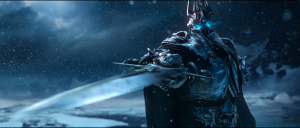Not really.
But I have returned to write this blog, after a long (and much needed) respite from the game.
If you’re like me and you’ve played World of Warcraft for any number of years, burnout may be a familiar sensation. I started playing the game in the early stages of the Burning Crusade, and this was my second bout of full-fledged burnout, accompanied by all the symptoms — disinterest in raiding, a renewed focus on PvP followed by a feeling of disgust with arena, and then finally the slow realization that I really should be doing something else with my time.
For me, that point comes when I’ve realized I’m no longer using the game as a means to unwind — if I hate a particular heroic, but I’m running it for those last two badges needed for a new item; if I can’t stand a certain raid instance, but I want those elusive shoulders to drop; if I’m getting tired of unbalanced PvP, but I stay to grind out 20 extra matches to reach a higher bracket. All these things are signs of burnout.
WotLK started out auspiciously enough — upon touching down in Vengeance Landing, that feeling of whole new realms to explore and new adventures to be had was strong. I remember rushing to the Dragonblight after dinging 76, glad to be back on my flying mount and eager to circle around the gorgeous Wyrmrest Temple a few times for some screen shots.
Leveling up was fun — I was worried I’d be deterred by the perpetual wintery atmosphere in Northrend, but the quest were more immersive, the new enemy models were engaging, the music (especially in Storm Peaks) was epic, and hey, there’s always Sholazar Basin. I zoomed around Scholazar, taking in the verdant sights on my flying mount first from high up in the air, then in low swooping dives, speeder-bike-on-Endor style.
And there’s something about that limbo between leveling up and the first stages of end-game that makes everyone a lot friendlier and willing to cooperate. At level 75, when people are wearing a mix of WotLK dungeon blues and last expansion’s epics, people don’t seem to feel the need to flaunt their e-peens. They just want to level up, and if the damage meters don’t exactly show parity, well hey, we’re all within a level or two of each other and will replace this gear in two weeks anyway.
From there it was heroics, then Naxxramas and Sartharion, and finally Malygos. I joined a new guild and I loved it. We had a couple small squads for heroics, which were a lot of fun with the folks in the guild, and our 25-man raiding efforts were largely successful, if a bit sloppy at times. We downed Sartharion with his three drakes on 25-man hard mode and came damn close to getting the 10-man achievement before I took a break from the game.
Ultimately, it was a series of unfortunate in-guild drama episodes that killed the fun for me. As one of two main officers under our guild’s GM, I was the guy tasked with holding our guild together during a rough patch, while our GM took his own sabbatical to care for his wife, who had just had surgery.
With one crisis barely averted, and various egos reassured, one particular rogue — whose attacks should be based on a drama bar instead of an energy bar — started sowing seeds of discontent, alleging loot favoritism while promising more epics and more success as he whispered into the ears of a few key raiders.
In my guild, I had a reputation as an extremely fair officer and an all-around nice guy. I’d mediated disputes, I’d been thanked countless times for staying above such disputes, and during loot council I tried to be an advocate for parity and fairness.
So it was that when a fourth of our guild /gquit after a particularly animated tantrum by the rogue in question, I was bombarded with tells from those key players, many of them like this: “You’re a great officer, and we want to continue raiding with YOU, but we can’t stay in this guild…”
I didn’t have it in me to lead the rebuilding efforts, and after two weeks our GM was still MIA. The slow trickle of /gquits that comes after a mass exodus was threatening to turn into a torrent, and suddenly my in-game stresses were beginning to feel a lot like the stress of real life.
Bottom line: It wasn’t fun anymore. I had to take a break.
So why did I come back? When 3.2 dropped, the idea of raiding and participating in PvP once again started to appeal to me, and I couldn’t resist the call of an entire tier of raiding sans trash. I love Trial of the Crusader. Plus, some old friends offered me an invite to their casual-but-skilled raiding core, and I knew I’d be running with people I like, people who are fun to raid with and know how to get the job done.
Now that I’ve been back for a few weeks and I feel like I’m a bit more in the loop, it felt like a natural step to return to writing this blog. Here’s to hoping more than a few Enhancement Shaman — and WoW players in general — will find some interesting posts and useful information here on Stormstrike.



















